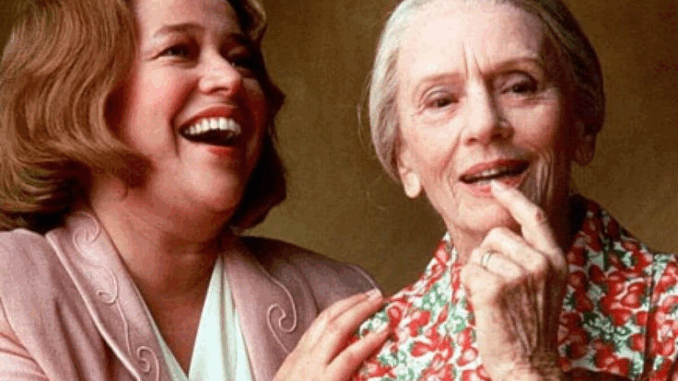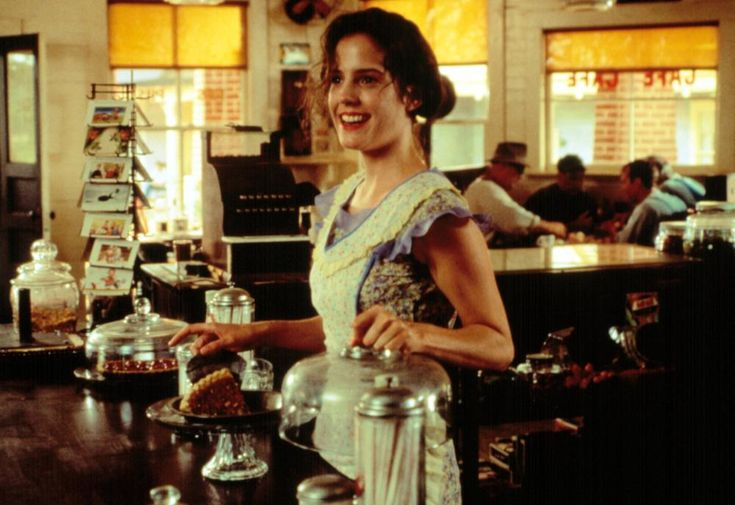
There are movies that entertain, and then there are movies that stay. They linger in your thoughts, comfort you in quiet moments, and feel like old friends when you return to them. Fried Green Tomatoes is one of those rare gems. Released in 1991, it has quietly carved out a permanent place in the hearts of millions—not because of flashy visuals or shocking twists, but because it understands the simple, aching truths of life, love, and human connection.
So what is it about this unassuming Southern story that continues to charm and move audiences over 30 years later?
A Story Within a Story – And That’s the Magic
One of the most unique things about Fried Green Tomatoes is its dual narrative structure. The film toggles between two timelines: the 1980s friendship between Evelyn Couch and Ninny Threadgoode, and the early 20th-century tale of Idgie Threadgoode and Ruth Jamison. This storytelling technique does more than just entertain—it creates a mirror between generations. It shows how the past can breathe life into the present, how stories passed down can become a form of healing, and how friendship knows no age.
Every time Ninny begins one of her stories, we don’t just listen—we’re transported. The Whistle Stop Café, with its sizzle of frying food and hum of community gossip, becomes a world so real you can practically smell the biscuits. And through her words, Evelyn is transformed—not just inspired, but awakened.
Friendship That Defies Time, Labels, and Expectations
At the heart of the film are the unshakable bonds between women. Whether it’s Evelyn and Ninny, or Idgie and Ruth, these relationships are deeply human. They’re not sanitized or simplified. They’re full of tension, loyalty, vulnerability, and quiet acts of love.
The nature of Idgie and Ruth’s relationship has sparked much conversation. Many see them as soulmates, their bond transcending the limitations of their time. Though never explicitly labeled romantic in the film, their connection is steeped in intimacy and fierce devotion. And for many LGBTQ+ viewers, especially those from older generations, this subtle depiction offered something powerful: representation in a world that often left them invisible.

Evelyn Couch: The Unexpected Heroine
Perhaps one of the most surprising emotional anchors of the film is Evelyn Couch. On the surface, she’s a bored, middle-aged housewife stuck in a rut. But as the story unfolds, she becomes a symbol of transformation. With Ninny’s encouragement and the tales of Idgie’s fearless defiance, Evelyn reclaims her confidence, her voice, and her worth.
Audiences love Evelyn because she is us. She represents anyone who has ever felt small, overlooked, or stuck. Watching her grow—smashing into that car in the grocery store parking lot while shouting “Towanda!”—is not just funny, it’s cathartic. It reminds us that change is always possible, and it’s never too late to become who you were meant to be.
A Southern Setting That Soothes the Soul
The setting of Fried Green Tomatoes is not just a backdrop—it’s a character in itself. The sleepy Southern town of Whistle Stop, Alabama, with its porch swings, fried food, and slow rhythms, feels like a warm blanket. It taps into a collective nostalgia—not just for a place, but for a feeling: community, comfort, belonging.
Even viewers who didn’t grow up in the South often find themselves drawn in by the familiarity of it all. The Sunday dinners, the nosy neighbors, the train tracks that run through town—it all feels like home, even if it’s one you’ve never been to.
Themes That Never Grow Old
What makes Fried Green Tomatoes so enduring is its quiet wisdom. It explores so many facets of the human experience:
-
Grief and loss: Ruth’s illness and death are devastating, yet handled with grace.
-
Empowerment: Evelyn’s personal revolution is a love letter to self-worth.
-
Racism and injustice: The subplot involving Big George touches on painful, enduring truths.
-
Found family: In both timelines, characters build communities of love beyond blood ties.
These are not just plot points—they’re emotional truths. And because of that, the film feels just as relevant today as it did in 1991.
The Comfort of Rewatching
There’s a reason people return to this film again and again. It’s not just for the sweet nostalgia or quotable moments. It’s because Fried Green Tomatoes offers comfort. In a world that often feels rushed, harsh, and uncertain, this film reminds us of the strength found in quiet resilience, in everyday acts of love, and in the stories we share.
It reminds us to check in on our elderly neighbors. To ask our friends how they’re really doing. To stop and savor the beauty in small things—a homemade meal, a good laugh, a shared memory.
A Legacy Still Cooking
More than three decades later, Fried Green Tomatoes continues to grow its audience. New generations are discovering it—on streaming platforms, in classroom discussions, or at family movie nights. And each new viewer finds something different: empowerment, healing, representation, or simply a really good cry.
The film may be rooted in the past, but its heart beats loudly in the present.
Because Fried Green Tomatoes isn’t just a film.
It’s a feeling.
A story passed from one heart to another.
And like the best Southern recipes, it gets better every time you return to it.
